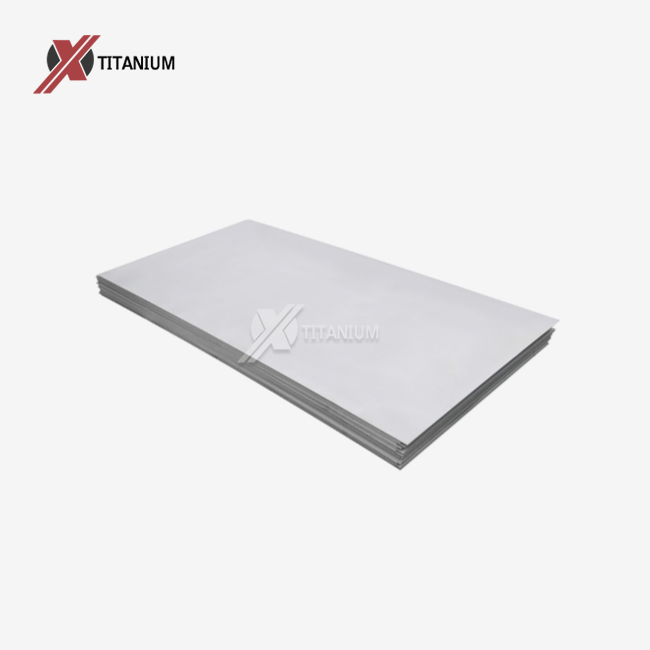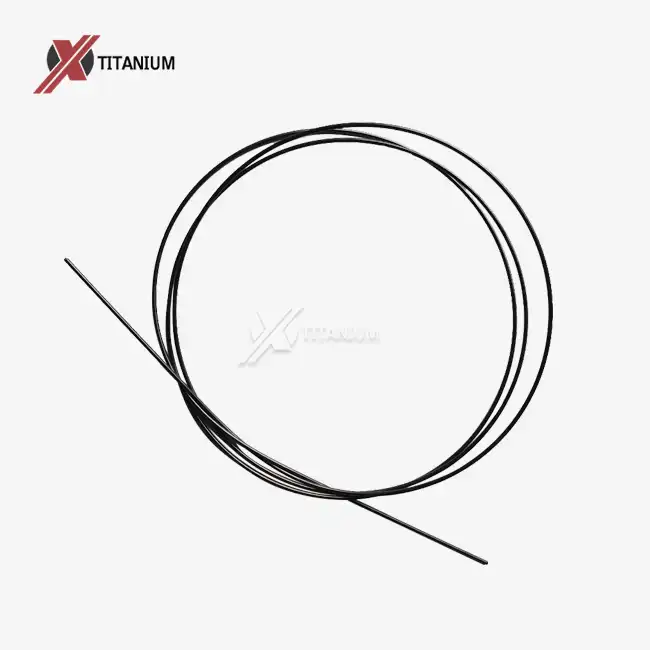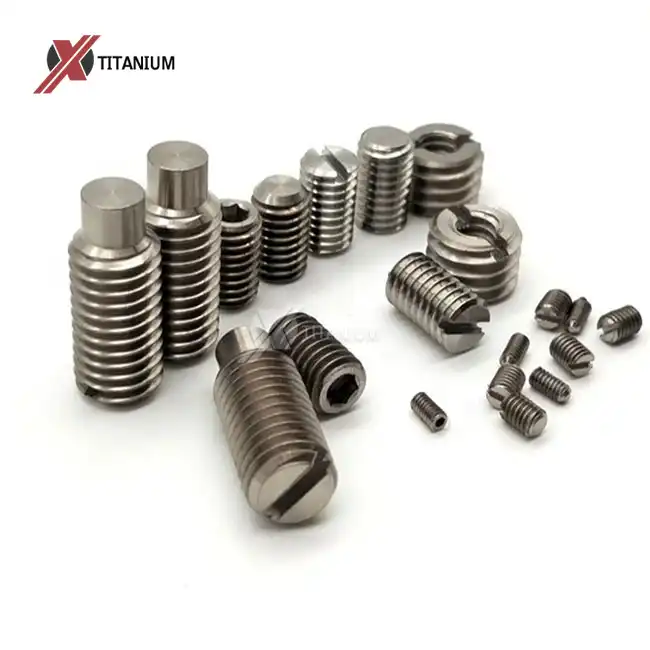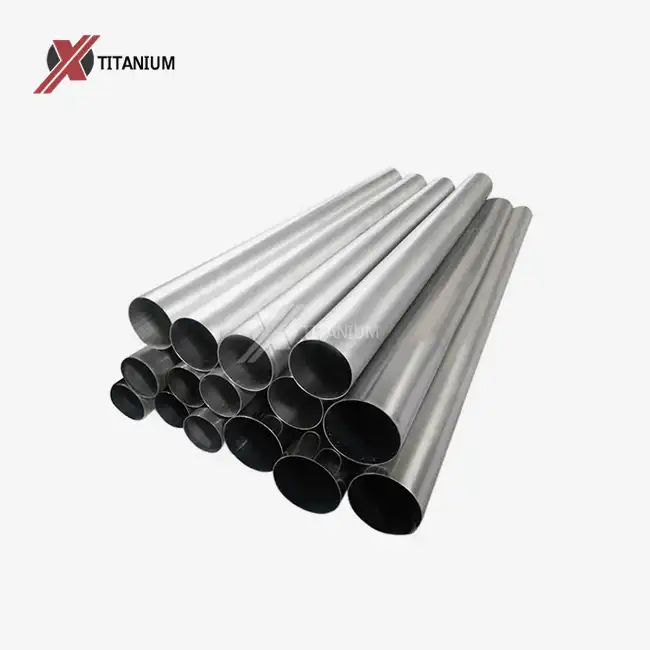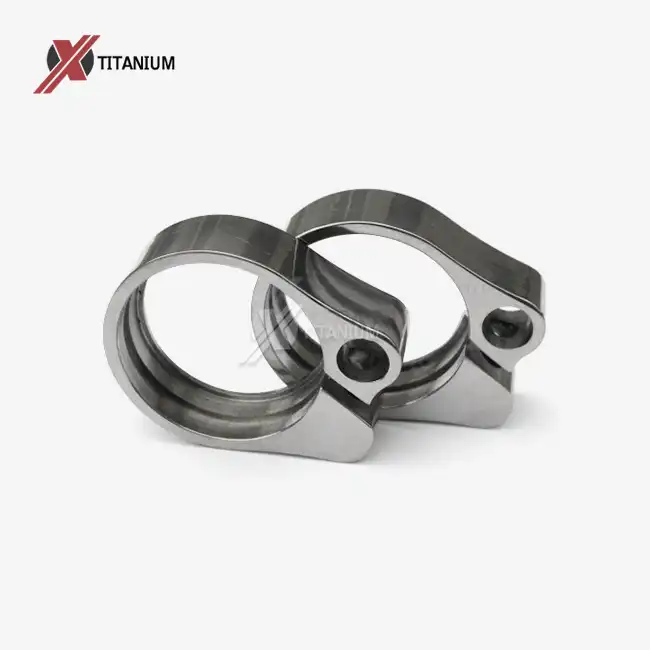The Unique Properties of 6Al 4V Titanium Plate for Orthopedic Applications
The 6Al 4V titanium plate boasts an array of properties that make it exceptionally suitable for orthopedic implants. Its high strength-to-weight ratio allows for the creation of robust yet lightweight implants, reducing the burden on patients' bodies while maintaining structural integrity. This is particularly beneficial in load-bearing applications such as hip and knee replacements.
Biocompatibility is another crucial advantage of the 6Al 4V titanium plate. The human body shows remarkable tolerance to this alloy, with minimal risk of allergic reactions or rejection. This compatibility extends to osseointegration – the process by which bone cells grow and adhere to the implant surface. The surface properties of 6Al 4V titanium promote better bone-implant integration, leading to more stable and long-lasting orthopedic solutions.
Corrosion Resistance and Durability
The exceptional corrosion resistance of 6Al 4V titanium plate significantly contributes to its suitability for orthopedic implants. In the harsh environment of the human body, where implants are constantly exposed to various fluids and biochemical processes, this alloy remains stable and resistant to degradation. This resistance not only extends the lifespan of the implant but also minimizes the release of metal ions into the body, reducing the risk of complications and adverse reactions.
Furthermore, the fatigue resistance of 6Al 4V titanium plate is superior to many other implant materials. Orthopedic implants, especially those in joints, are subject to repeated stress and strain. The ability of this alloy to withstand these cyclic loads without failing is crucial for long-term implant success and patient safety.
Advancements in 6Al 4V Titanium Plate Manufacturing for Orthopedic Implants
Recent technological advancements have significantly enhanced the manufacturing processes for 6Al 4V titanium plates, opening new possibilities in orthopedic implant design and functionality. Additive manufacturing, or 3D printing, has emerged as a game-changing technology in this field. It allows for the creation of complex, patient-specific implant geometries that were previously impossible or impractical to produce using traditional manufacturing methods.
These advanced manufacturing techniques enable the production of 6Al 4V titanium plates with optimized porous structures. These structures can be designed to mimic the natural architecture of bone, promoting better osseointegration and reducing the risk of implant loosening over time. The ability to fine-tune the porosity and surface characteristics of the implant at a microscopic level represents a significant leap forward in implant technology.
Surface Treatments and Coatings
Innovative surface treatments and coatings are being developed to further enhance the performance of 6Al 4V titanium plates in orthopedic applications. These treatments can modify the surface properties of the implant to improve biocompatibility, increase wear resistance, or promote faster bone growth. For instance, hydroxyapatite coatings can be applied to the titanium surface to accelerate osseointegration, while other treatments can create nano-textured surfaces that enhance cellular adhesion and proliferation.
Moreover, researchers are exploring the potential of incorporating antimicrobial properties into 6Al 4V titanium plates. By modifying the surface or applying specific coatings, it may be possible to create implants that actively resist bacterial colonization, addressing one of the most significant risks in orthopedic surgery – implant-associated infections.
Clinical Outcomes and Future Prospects of 6Al 4V Titanium Plate in Orthopedics
Clinical studies and long-term follow-ups have demonstrated promising outcomes for orthopedic implants made from 6Al 4V titanium plates. Patients receiving these implants often experience improved functionality, reduced pain, and enhanced quality of life compared to those with implants made from traditional materials. The durability of 6Al 4V titanium implants also translates to lower revision rates, sparing patients from additional surgeries and associated risks.
The versatility of 6Al 4V titanium plates extends beyond joint replacements. They are increasingly being used in spinal fusion procedures, craniomaxillofacial reconstructions, and trauma fixation. In each of these applications, the unique properties of the alloy contribute to better surgical outcomes and patient satisfaction.
Future Research Directions
As promising as the current applications are, research into 6Al 4V titanium plates for orthopedic implants continues to evolve. Scientists and engineers are exploring ways to further optimize the alloy's composition and manufacturing processes to enhance its performance in the body. One area of focus is the development of functionally graded implants, where the properties of the 6Al 4V titanium plate vary across its structure to better match the characteristics of surrounding bone tissue.
Another exciting avenue of research involves the integration of smart technologies with 6Al 4V titanium implants. The concept of "smart implants" that can monitor healing progress, detect early signs of complications, or even deliver localized drug therapy is no longer in the realm of science fiction. The excellent electrical properties of titanium make it a suitable base material for such advanced implant designs.
Conclusion
The 6Al 4V titanium plate represents a significant leap forward in orthopedic implant technology. Its unique combination of strength, biocompatibility, and corrosion resistance addresses many of the limitations of traditional implant materials. Advanced manufacturing techniques and surface treatments are further enhancing its performance, opening new possibilities in implant design and functionality. While challenges remain, such as reducing the cost of production and optimizing long-term performance, the trajectory is clear. The 6Al 4V titanium plate is not just the future of orthopedic implants; it is shaping the present, offering patients improved outcomes and quality of life.
Are you interested in exploring the potential of 6Al 4V titanium plates for your orthopedic applications? At Baoji Chuanglian New Metal Material Co., Ltd., we specialize in manufacturing high-quality titanium products, including 6Al 4V titanium plates. With over a decade of experience in titanium product machining and research, we can provide customized solutions to meet your specific needs. Contact us today at info@cltifastener.com or djy6580@aliyun.com to learn more about how our 6Al 4V titanium plates can revolutionize your orthopedic implant designs.
FAQ
What makes 6Al 4V titanium plate ideal for orthopedic implants?
6Al 4V titanium plate is ideal due to its high strength-to-weight ratio, excellent biocompatibility, and superior corrosion resistance. These properties ensure long-lasting, well-integrated implants with minimal risk of rejection or complications.
How does 6Al 4V titanium compare to other implant materials?
Compared to traditional materials like stainless steel or cobalt-chrome alloys, 6Al 4V titanium offers better biocompatibility, lower density, and improved corrosion resistance, leading to potentially better patient outcomes.
Are there any disadvantages to using 6Al 4V titanium in orthopedic implants?
While 6Al 4V titanium has many advantages, it can be more expensive than some traditional materials. However, its long-term benefits often outweigh the initial cost.
References
1. Niinomi, M. (2019). Recent research and development in titanium alloys for biomedical applications and healthcare goods. Science and Technology of Advanced Materials, 20(1), 443-471.
2. Wang, X., Xu, S., Zhou, S., Xu, W., Leary, M., Choong, P., ... & Xie, Y. M. (2016). Topological design and additive manufacturing of porous metals for bone scaffolds and orthopaedic implants: A review. Biomaterials, 83, 127-141.
3. Sidambe, A. T. (2014). Biocompatibility of Advanced Manufactured Titanium Implants—A Review. Materials, 7(12), 8168-8188.
4. Rack, H. J., & Qazi, J. I. (2006). Titanium alloys for biomedical applications. Materials Science and Engineering: C, 26(8), 1269-1277.
5. Elias, C. N., Lima, J. H. C., Valiev, R., & Meyers, M. A. (2008). Biomedical applications of titanium and its alloys. JOM, 60(3), 46-49.
